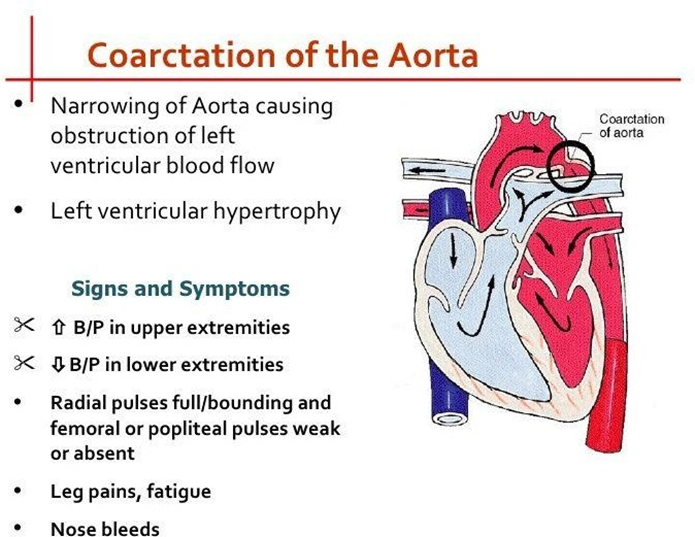A nurse is caring for an infant who has coarctation of the aorta. Which of the following should the nurse identify as an expected finding?
Upper extremity hypotension
Weak femoral pulses
Frequent nosebleeds
Increased intracranial pressure
The Correct Answer is B
A. Coarctation of the aorta typically results in hypertension in the upper extremities due to increased pressure proximal to the coarctation.
B. Weak or absent femoral pulses are characteristic findings in coarctation of the aorta due to reduced blood flow to the lower extremities beyond the coarctation. This finding indicates peripheral vascular compromise in the lower limbs.
C. Frequent nosebleeds are not typically associated with coarctation of the aorta.
D. Coarctation of the aorta does not directly affect intracranial pressure.

Nursing Test Bank
Naxlex Comprehensive Predictor Exams
Related Questions
Correct Answer is C
Explanation
A: This response invalidates the client's experience and may cause them to feel misunderstood or alienated.
B: This response does not address the seriousness of the client's statement and dismisses their fear.
C: This is an appropriate response because it acknowledges the client's experience without agreeing with the delusion, helping to maintain a grasp on reality.
D: While this question could be useful during a more in-depth conversation, it does not address the immediate safety concern and may not help deescalate the situation.
Correct Answer is A
Explanation
A: A client who is scheduled for a colonoscopy and is taking sodium phosphate requires follow-up care because sodium phosphate can cause colonic mucosal damage and electrolyte imbalances that may affect the safety and accuracy of the colonoscopy. Sodium phosphate is a bowel preparation agent that empties the colon before the procedure, but it can also cause dehydration, kidney injury, and cardiac arrhythmias.
B: Induration following a Mantoux test indicates a reaction that may suggest tuberculosis exposure, but this is an expected result that requires assessment rather than immediate follow-up.
C: Bumetanide is a diuretic, and an increase in urination is an expected effect of this medication.
D: Warfarin is considered safe during lactation since it is not excreted in breastmilk to any measurable degree.
Whether you are a student looking to ace your exams or a practicing nurse seeking to enhance your expertise , our nursing education contents will empower you with the confidence and competence to make a difference in the lives of patients and become a respected leader in the healthcare field.
Visit Naxlex, invest in your future and unlock endless possibilities with our unparalleled nursing education contents today
Report Wrong Answer on the Current Question
Do you disagree with the answer? If yes, what is your expected answer? Explain.
Kindly be descriptive with the issue you are facing.
